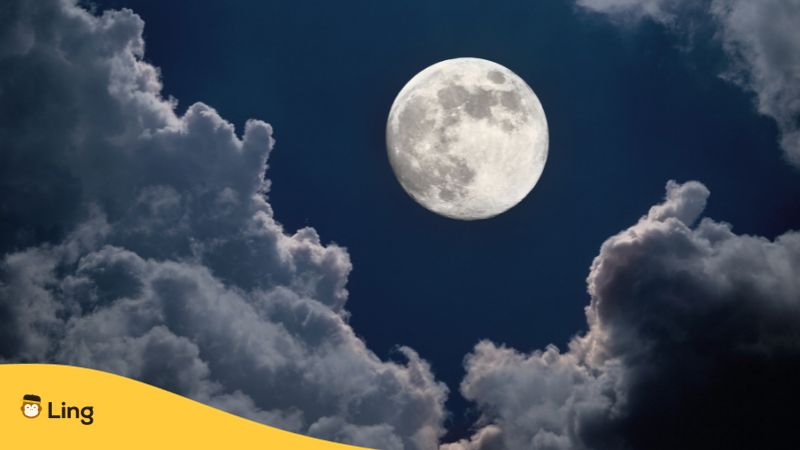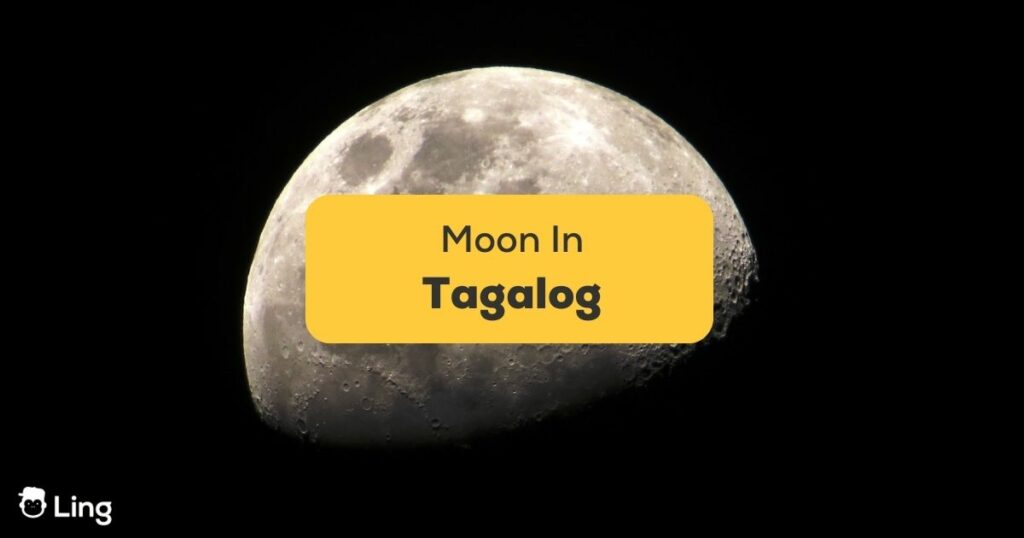Scratching your head and thinking about the moon in Tagalog? Can’t blame you! If you ever stopped to think about how the moon isn’t just this big ol’ rock in the sky, but like, a super significant part of Filipino culture, then we’re the same! In Tagalog, which is one of the main languages spoken in the Philippines, “moon” is “buwan.” But get this: “buwan” also means “month.” Mind blown, right? It’s like the moon and time are having this epic dance in the fabric of Tagalog language. Let’s dive deep, like we’re searching for buried treasure, into the role of the moon in Filipino culture and all the symbolism that comes with it.
So, for all you language learners or lucky ducks planning a trip to the Philippines, wrapping your head around the word “buwan” is basically like finding a golden ticket. Why? Because language is way more than just a way to ask where the bathroom is. It’s like a VIP pass to the heart of a culture, giving you a front-row seat to all the juicy details like traditions, beliefs, and all those stories your history teacher forgot to mention.
When you learn words like “buwan” and all the folklore and beliefs that come with it, you’re not just adding to your vocab list. Nah, you’re unlocking a whole new level of understanding of Filipino culture. It’s like you’re adding a new chapter to your travel diary, one that’s filled with rich connections and jaw-dropping “aha” moments with the locals. Because, let’s face it, isn’t that what traveling is all about? Discovering new places is cool, but connecting with the people? That’s where the real magic happens.

What Is Moon In Tagalog?
The double meaning of the word “buwan”, as we saw earlier, makes for some pretty awesome phrases and uses in the language. Let’s break it down with some examples:
- “Maganda ang buwan ngayon.” – The moon’s looking pretty fab tonight.
- “Buwan na naman ng Mayo!” – Oh em gee, it’s May again!
- “Pinagtawanan niya ako sa ilalim ng buwan.” – He totally cracked up at me under the moonlight.
See how “buwan” just slides right in there, doing double duty as both the moon in the sky and that thing that makes our calendars tick? You’re not just learning a word here, you’re getting a VIP pass to the cool, dynamic world of Tagalog.
But wait, there’s more!
There’s a bunch of other moon-related words and phrases that are just waiting to be discovered. Like “bulan-bulan,” an old-school word for moon that you might spot in some vintage poetry or songs. “Kabilugan ng buwan” is your go-to phrase for a full moon, which, by the way, is often tied to all sorts of deep emotions and spiritual happenings. “Kalagitnaan ng buwan” is when the month hits its stride, and the moon shows off its half-eaten cookie shape.
And for the grand finale, let’s throw in an idiom: “Sa pagitan ng dalawang buwan,” which translates to “between two moons.” It’s like the Tagalog version of “once in a blue moon.” Knowing these phrases is like holding the key to unlocking a treasure chest filled with the rich, vibrant essence of Filipino culture and language. So, go on, give it a whirl, and start impressing your friends with your newfound wisdom!

Philippine Folklore Related To The Moon
Ever had a sleepover where you swapped tales of mythical creatures coming to life in the shadows? Oh, honey, the Filipinos wrote the book on that, and they point to the full moon as the ultimate supernatural shindig.
Let’s chat about the aswang, shall we? This isn’t your garden-variety Filipino ghost or monster. We’re talking a shape-shifting, nightmare-inducing creature that’s at its hungriest during a full moon, ready to chomp on anyone unlucky enough to cross its path. And then there’s the kapre, this giant fella who’s basically the king of treehouses and has a thing for tobacco and cheeky pranks. Folklore has it, he’s living his best life when the full moon’s lighting up the night. Spooky, right? But hey, these stories are like catnip for Filipino kiddos who just eat up these tales with wide-eyed wonder.
But hold up, because the moon’s not just playing host to these legendary shindigs for the aswang and kapre. It’s got its own epic saga going on. Ever heard of Bakunawa? Picture this: a massive sea serpent with a serious case of moon FOMO. The rumor mill has it that Bakunawa was so obsessed with the moon’s glow-up, it just had to gobble it up, throwing us all into a lunar eclipse.
And what’s the Filipino response to this celestial soap opera? They round up the pots and pans and start a full-on percussion ensemble, loud enough to make Bakunawa do a spit take and send the moon back into the spotlight. Just like that, peace and glow are restored to the night sky. Mic drop!
Moon-Related Festivals & Celebrations In The Philippines
Let’s talk about the Mid-Autumn Festival or Mooncake Festival, shall we? This fest is like the ultimate full moon party, celebrated with all the hype by the Chinese-Filipino crew. It’s all about basking in the moon’s stunning glow and feeling the love with family. And, of course, let’s not forget the must-haves: delish mooncakes and a traditional dice game that goes by the name of “pua tiong chiu.”
But hold on, because we’re just getting started! The indigenous T’boli people from South Cotabato are also all about giving the moon its due props. Enter the Seslong Festival. This bad boy is a full-on Thanksgiving bash held under the full moon to say a big “thank you” for a bumper crop. For these folks, the moon’s not just a pretty face in the night sky—it’s like their partner in crime for scoring a sick harvest.
Next up, we’ve got the Kadayawan Festival in Davao City. This shindig goes down in August, when the moon’s strutting its stuff in all its full moon glory. It’s a vibrant love letter to the moon, Mother Nature, and the abundance of life. Picture this: a sea of colors, the sickest beats, and a feast that’ll make your taste buds do a happy dance. It’s basically the Filipino spirit in a nutshell—resilience, joy, and a touch of moonlight magic.
Learn Some More Tagalog With Ling
Alrighty, fellow word nerds, ready to dive into the technicolor world that is Tagalog? Yep? Fantastic!
Mastering Tagalog is now as easy as pie and, might I add, as entertaining as a rollercoaster ride at your favorite amusement park. Just make a beeline for the App Store or Play Store, and get the Ling app downloaded.
With Ling, you’ll be cruising through the streets of Tagalog, having the time of your life, and before you even realize it, you’ll be nattering away like a local. So, what’s the holdup? Time to get this Tagalog fiesta started! And don’t forget, in the vast realm of language learning, Ling is the absolute monarch!


































































